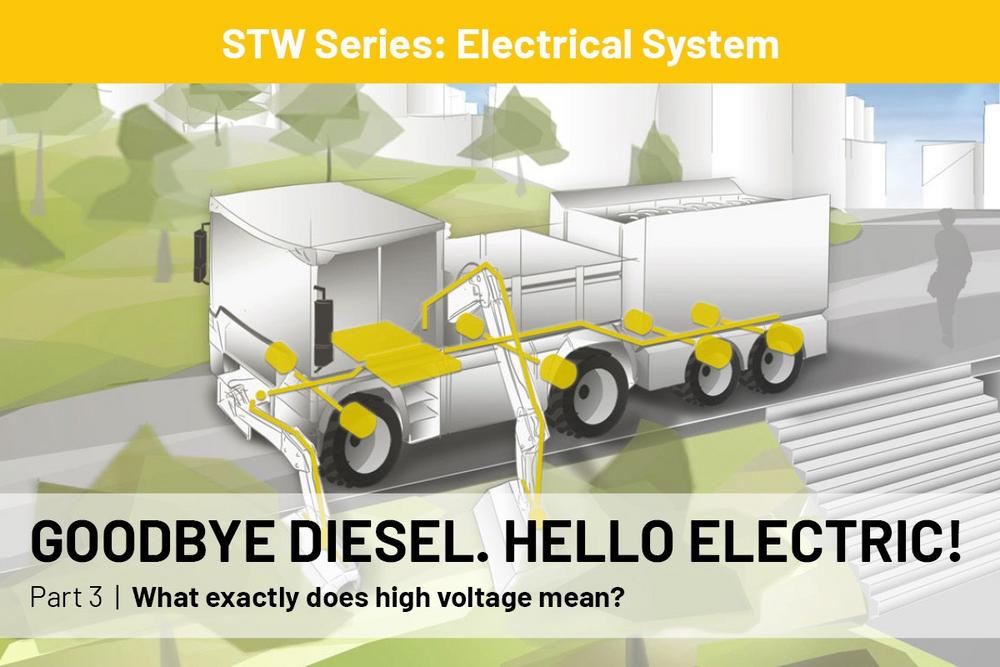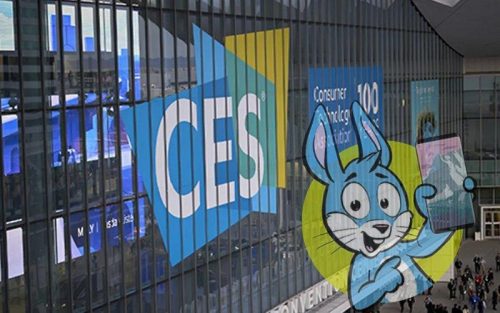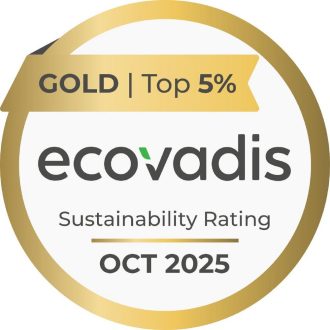
Goodbye Diesel, Hello Electric!
With 35 years of experience in the digitalization, automation and electrification of mobile machines, we support our customers with customized workshops, the right concepts and suitable system architectures. But what exactly is this electrification? And how can I integrate it into my business model?
In the automotive sector, generally only low voltages in the on-board power supply are known for vehicles with combustion engine. 12 V DC (Direct Current = DC voltage) in cars, 24 V DC for commercial vehicles and, in mild hybrid vehicles, 48 V DC as an additional, second voltage level. This means that the voltages remain below the touch protection limit of 60 V DC, up to which there is no risk of dangerous electric shocks. However, in an electrified drive line, higher powers – from 50 kW upwards – are necessary. For voltages below the touch protection limit, currents of more than 800 A are required. However, high currents mean very high costs and increased weight due to thicker cables and also high power losses. For this reason, the driving power in electrified vehicles is provided with higher voltages.
400 V systems are used in the automotive sector and 800 V systems for buses, trucks and larger machines.
In order to make a lay person aware of the increased risk potential, the terms “high voltage” (HV) for voltages of 60 – 1500 V DC and “low voltage” (LV) for voltages < 60 V DC were introduced in automotive engineering. These terms are used differently in the area of electrical power engineering, which describes the range of 0 – 1500 V DC as “low voltage”. This means that the automotive engineering term “high voltage” should not be confused with the power engineering term “high voltage”, which refers to voltages > 1500 V DC.
The increased risk potential is not only illustrated through the terminology, but also through the label on the HV system. HV components must feature the warning sign “Danger: High voltage” and HV cables must be color-coded orange (according to ISO 6469-3 and ECE-R 100).
Series vehicles with HV systems must be designed to be intrinsically HV-safe, i.e. technical measures on the vehicle ensure complete protection against contact and electric arcs with respect to the high-voltage system. As the owner of an Audi e-tron, no additional training is therefore required to operate the vehicle.
However, anyone who designs such vehicles as prototypes before SOP (Research & Development) or who maintains, repairs, rebuilds or retrofits series vehicles (service workshops), cannot guarantee HV intrinsic safety for these vehicles. In this case, the employer is obligated to train their employees so that they are able to assess work on the HV vehicle, recognize hazards and take the necessary protective measures.
The German Social Accident Insurance information DGUV I 200-005 in conjunction with DGUV V 3 form the basis of these trainings. It divides the scope of qualifications into three levels, depending on the activity:
- Level 1 for non-electrical work carried out on HV vehicles (e.g. work on the car body)
- Level 2 for work carried out on the HV system in de-energized condition (e.g. replacing components)
- Level 3 for work carried out on the HV system under voltage (e.g. finding errors)
Based on the risk assessment, the employer must determine the training needs for their employees.
The STW Academy offers training courses to obtain such qualifications. Experienced engineers and our responsible electrical specialists provide customers with essential theoretical knowledge and practical experience in handling HV systems. The training contents can be tailored to the customer’s specific requirements. After passing the final test, the participants receive a certificate from the STW Academy, confirming their qualification for working on HV systems.
As an internationally active company with Headquarter in Kaufbeuren, we stand for the digitalization, automation and electrification of mobile machines for 35 years. With generic or customer-specific products, systems and solutions developed and manufactured at our headquarters in Germany, we support our customers with innovative technology on their way to making their machines the best in the world.
Supplemented by partner products and accompanied by our training, support and system teams, we help medium-sized companies and large OEMs to increase the performance and efficiency of their machines and increase safety. Through communication between machines, connectivity with cloud platforms and additional partner services, we enable the integration of mobile machines into business processes.
(STW) Sensor-Technik Wiedemann GmbH
Am Bärenwald 6
87600 Kaufbeuren
Telefon: +49 (8341) 9505-0
Telefax: +49 (8341) 9505-55
http://www.stw-mm.com
![]()




